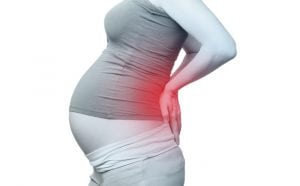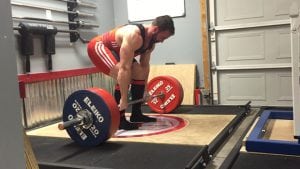One of the questions we often get asked is a straightforward one – “can chiropractic treatment help someone like me?”. Some recent research has attempted to understand which groups make the most use of chiropractors – it suggested that chiropractic treatment is most popular of all amongst women, especially highly educated professionals[1] and children – especially younger children.[2] However, its is notable that the benefits of chiropractic are now starting to be appreciated by other groups who have perhaps not traditionally thought of chiropractic as a go to solution – this week, here are a few examples from our own experience here at Complete Chiropractic .
Work in a trade?
You might be surprised how many tradesmen seek chiropractic care each year – but when you consider that on average, stress and musculoskeletal disorders account for around 80% of the work – related ill health cases in the Construction sector[3] it makes sense that chiropractic is so popular!
Across all industries, back pain (and lower back pain in particular) is a major concern – but data from a GP reporting scheme constructed by the health and safety executive in the UK, suggests the rate of work related musculoskeletal disorder in the Construction sector is almost twice the rate across all other industries.
Sprains, strains and persistent pain are frequent issues for tradesmen, but all issues which we address here at Complete Chiropractic . For lower back pain, there’s no better treatment than chiropractic – and for acute injuries our sports therapists are ideally positioned to help you recover faster. Perhaps more importantly though, long term chiropractic care can assist tradesmen in maintaining optimal posture and proper range of movement, which in turn reduces the chance of injury. Research has confirmed that you are considerably more likely to suffer al low back injury if your posture is already a problem! [4]
Pregnant?
Low back pain is one of the most commonly reported ailments during pregnancy – and is perhaps even more common after birth. European studies have reported the rate of low back pain during the 9 months of pregnancy to be from 46% to 76%[5][6]. Recent US studies have suggested similar numbers – from 57% to 69%.[7] Sadly, many women believe that back pain is just a part of pregnancy and simply has to be endured.
Thankfully, this isn’t true – and research suggests that despite public perception chiropractic is a safe and effective methodology to avoid back pain during, and after pregnancy. While some mothers have concerns about spinal manipulation while pregnant, it’s important to realise that Doctors of Chiropractic are highly trained experts who will never perform spinal manipulation, or any other treatment unless they are sure that it poses no risk to mother or baby. What’s even more important to realise is that chiropractic care can be still be highly effective via many of the other available methodologies which do not involve spinal manipulation. This is especially the case with practitioners of chiropractic biophysics, who have a wide array of options at their disposal besides spinal manipulation.
As a lower-force alternative to manual spinal manipulation, the activator technique is often a good choice for pregnant clients. The Activator technique uses a small, hand-held instrument called the Activator Adjusting Instrument to deliver a gentle force to the spine with the goal of restoring motion to the targeted spinal vertebra or joint. Both are available to you here at Complete Chiropractic.
Work at a desk?
If you spend most of your day working at a desk, you’ll probably be well aware of the common problems associated with poor posture and the ways in which a desk job can aggravate them. Lower back pain, neck pain and significant poor posture are all frequent reasons for office workers to visit the chiropractor. What you might not realise is that a proper scheme of treatment coupled with relevant stretches and exercises can go a long way to preventing pain developing in the first instance. You might not be able to change your job, but you probably can make some small changes to the way you sit, organise your space and break up your time spent sitting.
There’s nothing new there – but what many office workers often don’t think about is their risk of acute injury, usually associated with poor lifting technique But why is this such an issue for office workers? Like most things spine related when it comes to safe lifting, the importance of correct posture cannot be overstated – and as we just mentioned, many office workers have far from optimal posture.
A recent study which measured a group of healthy men lifting a 10 kg weight confirmed the impact that poor posture can have when lifting say, a box of printer paper. In the study, scientists measured electrical activity in the men’s trunk muscles and the pressure between vertebrae of their spines. Both the load on their spines and activity in their muscles were significantly higher when the men bent their backs, rather than their knees while lifting[8]. A trip to the chiropractor might therefore help you avoid a major back strain when you least expect it.
Like hitting the gym?
No matter what your sport of activity, good posture and a clean bill of spinal health is the way to go – but if you like to hit the gym and pump some iron a trip to the chiropractor might just save you a major pain in the neck (literally!).
The cervical spine (the part which supports your upper back and neck) is highly vulnerable to injuries in both the soft tissue and joint structures such as the discs and ligaments during resistance training. The usual culprits are uneven lifting techniques, poor spinal posture and repeated flexion and extension movements, but often injuries to the cervical spine occur simple because of poor spinal posture from your daily life into the gym and not realising you’re putting yourself at risk.
Today, most of us suffer from some degree of forward head posture – this causes hyperextension of the upper segments of the cervical spine, and flexion in the lower segments. That’s a recipe for a nasty neck tweak on your next squat or deadlift if not corrected.
The solution is simple – correct your posture and protect your neck! Chiropractic treatment is ideal for correcting any issues, but also for maintaining good posture and flexibility in the future.
[1] Haldeman S et al. The Global Spine Care Initiative: care pathway for people with spine-related concerns. Eur Spine J. 2018 Aug 27
[2] Anne Helene et al. Demographic profile of pediatric patients attending a Norwegian chiropractic practice Journal of Clinical Chiropractic Pediatrics Sep2017; 16(1): 1362-1367
[3] HSE, Health and safety statistics for the construction sector in Great Britain, 2017 http://www.hse.gov.uk/statistics/industry/construction/construction.pdf
[4] Arch Phys Med Rehabil/ 2002;83 :48-59
[5] Kristiansson P, Svärdsudd K, von Schoultz B. Back pain during pregnancy: A prospective study. Spine 1996;21:702– 8.
[6] Ostgaard HC. Prevalence of back pain in pregnancy. Spine 1991;16:549 –52.
[7] Wang SM et al. Low back pain during pregnancy: Prevalence, risk factors, and outcomes. Obstet Gynecol 2004;104:65–70.
[8] J Spine 2006; 31 :18-23




